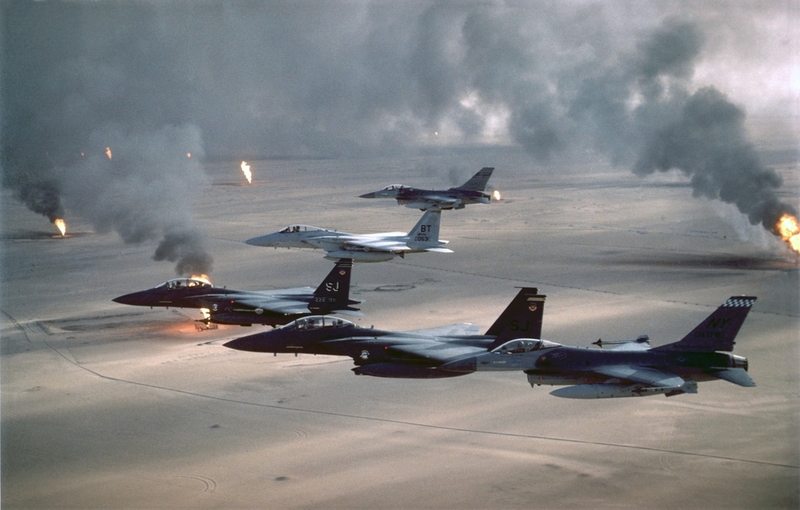January 16th 1991: The day when began Operation Desert Storm: A Turning Point in Modern Warfare
January 16th is a day etched in modern history as the beginning of the Persian Gulf War, specifically marked by the initiation of Operation Desert Storm. This date serves as a poignant reminder of the complexities and consequences of international military conflicts.

An In-depth look at the Gulf War's decisive campaign
Operation Desert Storm, initiated on January 16, 1991, stands as one of the most significant military campaigns in the late 20th century. This operation, a key phase of the Persian Gulf War, showcased the potency of coalition forces and advanced military technology in modern warfare.
The genesis of operation Desert Storm
Following Iraq's invasion of Kuwait in August 1990, the United Nations issued a resolution demanding Iraqi withdrawal. With Iraq's non-compliance, a coalition led by the United States, comprising forces from 34 nations, prepared for military intervention to liberate Kuwait.
The air campaign
Desert Storm commenced with a massive aerial bombing campaign, one of the largest in history. This phase aimed to destroy Iraqi military infrastructure, weaken their defense capabilities, and cut off communication lines. The use of precision-guided munitions, a relatively new technology at the time, allowed for highly accurate strikes, minimizing collateral damage.
The ground offensive
Following five weeks of relentless aerial bombardment, the ground phase began in late February. The coalition forces, benefiting from superior training and equipment, quickly overwhelmed Iraqi forces. The ground offensive, known for its speed and efficiency, lasted only 100 hours before a ceasefire was declared.
Technological and military innovations
Operation Desert Storm was notable for its extensive use of advanced technology. Stealth aircraft, GPS for navigation and targeting, and night-vision equipment were employed on a large scale. This war also saw the first widespread use of live news broadcasts from the front lines, significantly impacting public perception of the conflict.
Coalition dynamics and international diplomacy
The operation demonstrated the effectiveness of international coalitions in military operations. The diplomatic efforts led by the United States in uniting diverse nations under a common cause were significant in the operation's success.
Humanitarian and environmental impact
Despite the strategic success of the operation, it also brought attention to the humanitarian and environmental cost of war. Civilian casualties, the displacement of people, and the ecological damage due to oil spills and fires were sobering reminders of the war's destructive nature.
The aftermath and legacy
Operation Desert Storm played a crucial role in liberating Kuwait and significantly weakened Iraq's military capabilities. However, it also set the stage for future conflicts and ongoing instability in the region. The operation reshaped military strategies and tactics worldwide and is often cited as a case study in modern warfare.
Reflections on operation Desert Storm
As we look back on Operation Desert Storm, it serves as a powerful example of the capabilities and consequences of military intervention. It underscores the importance of strategic planning, the potential of technological advancements in warfare, and the need for careful consideration of the humanitarian and environmental impacts of military action.










